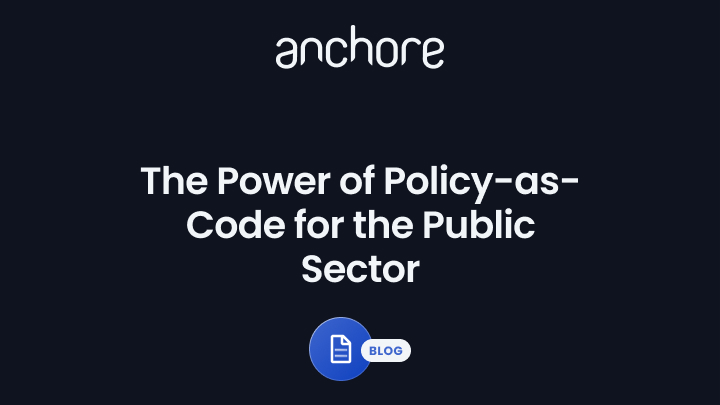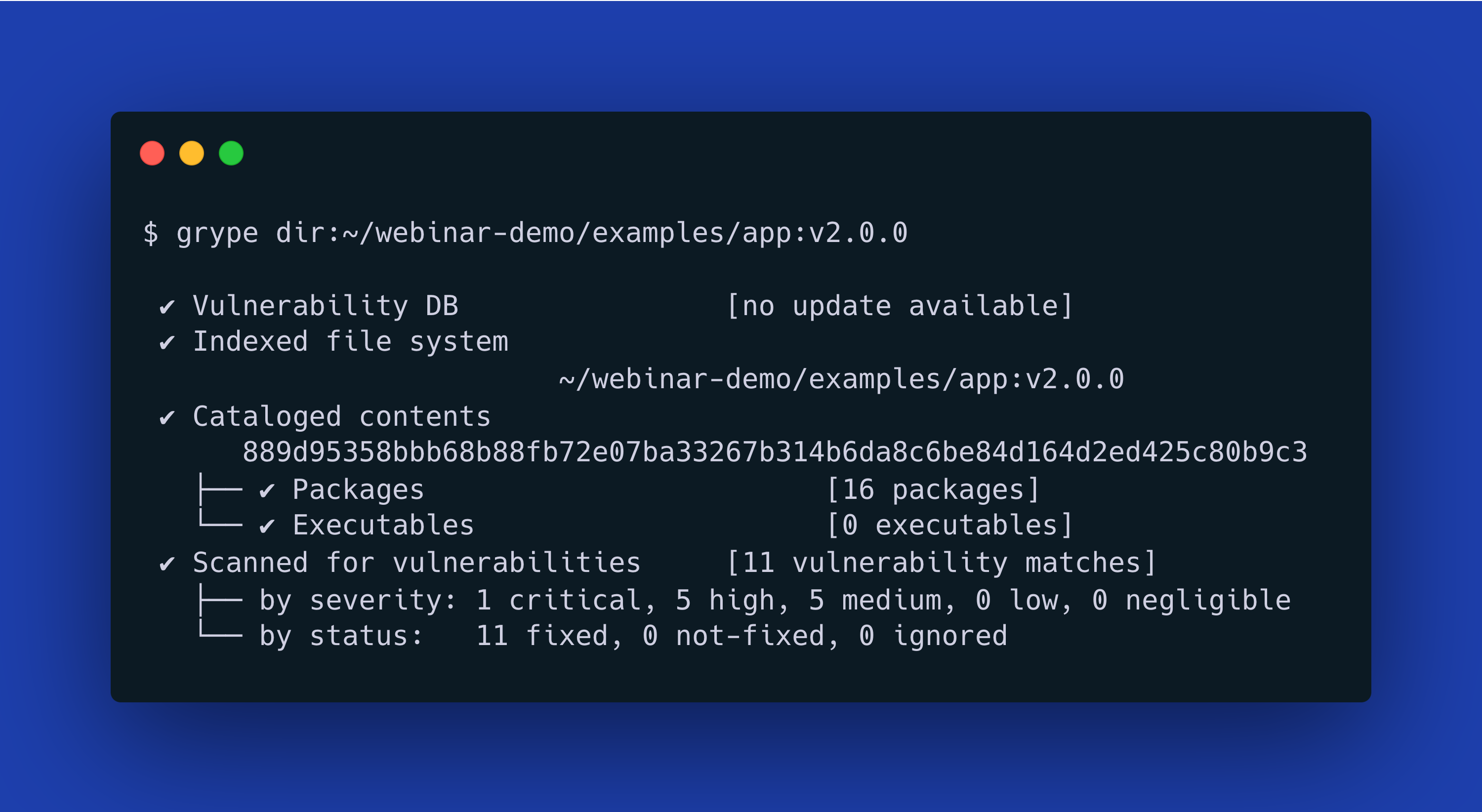As the public sector and businesses face unprecedented security challenges in light of software supply chain breaches and the move to remote, and now hybrid work, means the time for policy-as-code is now.
Here’s a look at the current and future states of policy-as-code and the potential it holds for security and compliance in the public sector:
What is Policy-as-Code?
Policy-as-code is the act of writing code to manage the policies you create to help with container security and other related security policies. Your IT staff can automate those policies to support policy compliance throughout your DevSecOps toolchain and production systems. Programmers express policy-as-code in a high-level language and store them in text files.
Your agency is most likely getting exposure to policy-as-code through cloud services providers (CSPs). Amazon Web Services (AWS) offers policy-as-code via the AWS Cloud Development Kit. Microsoft Azure supports policy-as-code through Azure Policy, a service that provides both built-in and user-defined policies across categories that map the various Azure services such as Compute, Storage, and Azure Kubernetes Services (AKS).
Benefits of Policy-as-Code
Here are some benefits your agency can realize from policy-as-code:
- Information and logic about your security and compliance policies as code remove the risks of “oral history” when sysadmins may or may not pass down policy information to their successors during a contract transition.
- When you render security and compliance policies as code in plain text files, you can use various DevSecOps and cloud management tools to automate the deployment of policies into your systems.
- Guardrails for your automated systems because as your agency moves to the cloud, your number of automated systems only grows. A responsible growth strategy is to protect your automated systems from performing dangerous actions. Policy-as-code is a more suitable method to verify the activities of your automated systems.
- A longer-term goal would be to manage your compliance and security policies in your version control system of choice with all the benefits of history, diffs, and pull requests for managing software code.
- You can now test policies with automated tools in your DevSecOps toolchain.
Public Sector Policy Challenges
As your agency moves to the cloud, it faces new challenges with policy compliance while adjusting to novel ways of managing and securing IT infrastructure:
Keeping Pace with Government-Wide Compliance & Cloud Initiatives
FedRAMP compliance has become a domain specialty unto itself. While the United States federal government maintains control over the policies behind FedRAMP, and the next updates and changes, FedRAMP compliance has become its own industry with specialized consultants and toolsets that promise to get an agency’s cloud application through the FedRAMP approval process.
As government cloud initiatives such as Cloud Smart become more important, the more your agency can automate the management and testing of security policies, the better. Automation reduces human error because it does away with the manual and tedious management and testing of security policies.
Automating Cloud Migration and Management
Large cloud initiatives bring with them the automation of cloud migration and management. Cloud-native development projects that accompany cloud initiatives need to consider continuous compliance and security solutions to protect their software containers.
Maintaining Continuous Transparency and Accountability
Continuous transparency is fundamental to FedRAMP and other government compliance programs. Automation and reporting are two fundamental building blocks. The stakes for reporting are only going to increase as the mandates of the Executive Order on Improving the Nation’s Cybersecurity become reality for agencies.
Achieving continuous transparency and accountability requires that an enterprise have the right tools, processes, and frameworks in place to monitor, report, and manage employee behaviors throughout the application delivery life cycle.
Securing the Agency Software Supply Chain
Government agencies are multi-vendor environments with homogenous IT infrastructure, including cloud services, proprietary tools, and open source technologies. The recent release of the Container Platform SRG is going to drive more requirements for the automation of container security across Department of Defense (DoD) projects
Looking to learn more about how to utilizing a policy-based security posture to meet DoD compliance standards like cATO or CMMC? One of the most popular technology shortcuts is to utilize a DoD software factory. Anchore has been helping organizations and agencies put the Sec in DevSecOps by securing traditional software factories, transforming them into DoD software factories. Get caught up with the content below:
Policy-as-Code: Current and Future States
The future of policy-as-code in government could go in two directions. The same technology principles of policy-as-code that apply to technology and security policies can also render any government policy-as-code. An example of that is the work that 18F is prototyping for SNAP (Supplemental Nutrition Assistance Program) food stamp program eligibility.
Policy-as-code can also serve as another automation tool for FedRAMP and Security Technical Implementation Guide (STIG) testing as more agencies move their systems to the cloud. Look for the backend tools that can make this happen gradually to improve over the next few years.
Managing Cultural and Procurement Barriers
Compliance and security are integral elements of federal agency working life, whether it’s the DoD supporting warfighters worldwide or civilian government agencies managing constituent data to serve the American public better.
The concept of policy-as-code brings to mind being able to modify policy bundles on the fly and pushing changes into your DevSecOps toolchain via automation. While theoretically possible with policy-as-code in a DevSecOps toolchain, the reality is much different. Industry standards and CISO directives govern policy management at a much slower and measured cadence than the current technology stack enables.
API integration also enables you to integrate your policy-as-code solution into third-party tools such as Splunk and other operational support systems that your organization may already use as your standards.
Automation
It’s best to avoid manual intervention for managing and testing compliance policies. Automation should be a top requirement for any policy-as-code solution, especially if your agency is pursuing FedRAMP or NIST certification for its cloud applications.
Enterprise Reporting
Internal and external compliance auditors bring with them varying degrees of reporting requirements. It’s essential to have a policy-as-code solution that can support a full range of reporting requirements that your auditors and other stakeholders may present to your team.
Enterprise reporting requirements range from customizable GUI reporting dashboards to APIs that enable your developers to integrate policy-as-code tools into your DevSecOps team’s toolchain.
Vendor Backing and Support
As your programs venture into policy compliance, failing a compliance audit can be a costly mistake. You want to choose a policy-as-code solution for your enterprise compliance requirements with a vendor behind it for technical support, service level agreements (SLAs), software updates, and security patches.
You also want vendor backing and support also for technical support. Policy-as-code isn’t a technology to support using your own internal IT staff (at least in the beginning).
With policy-as-code being a newer technology option, a fee-based solution backed by a vendor also gets you access to their product management. As a customer, you want a vendor that will let you access their product roadmap and see the future.
Interested to see how the preeminent DoD Software Factory Platform used a policy-based approach to software supply chain security in order to achieve a cATO and allow any DoD programs that built on their platform to do the same? Read our case study or watch our on-demand webinar with Major Camdon Cady.



